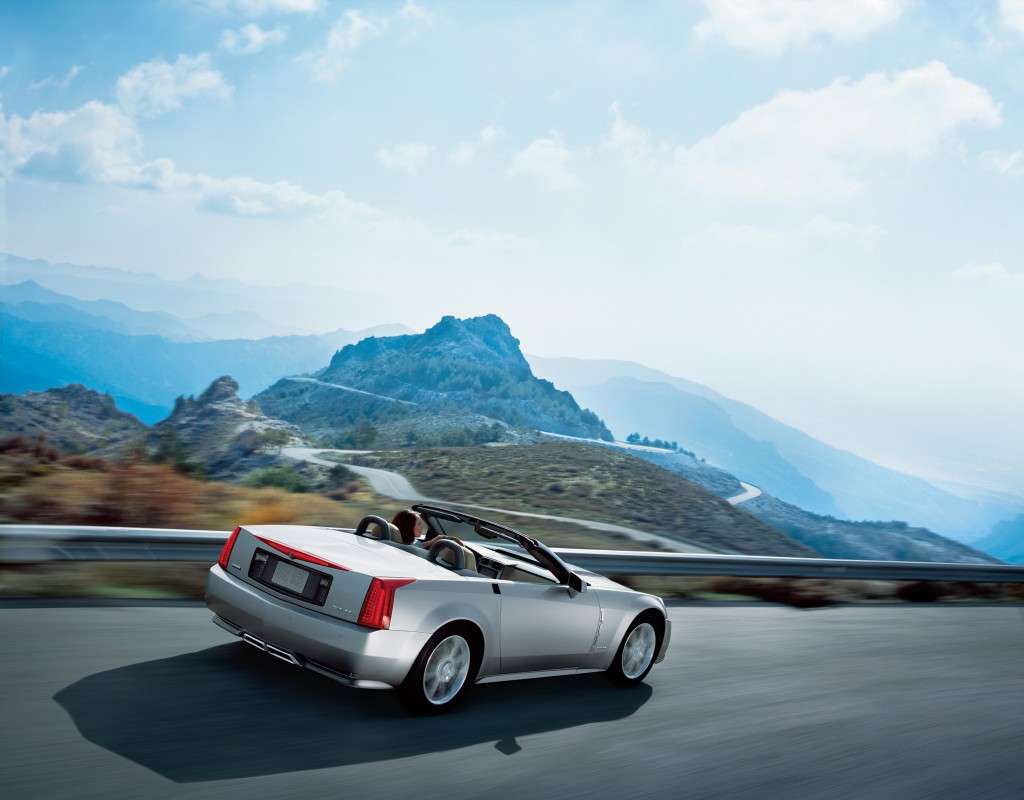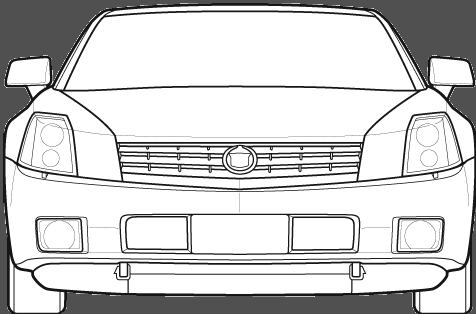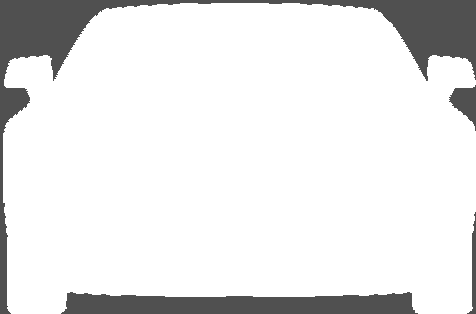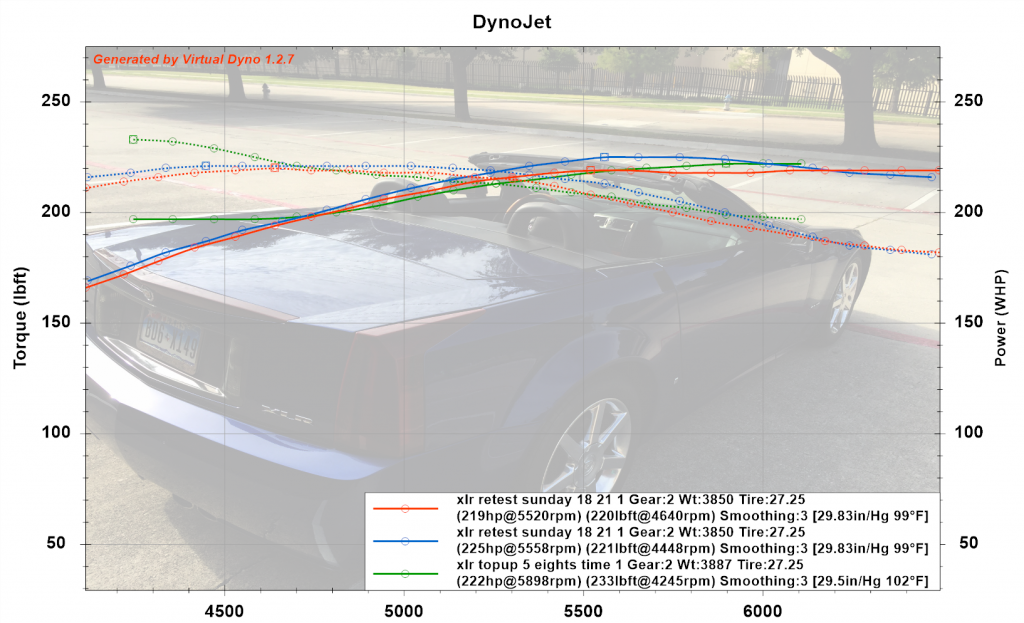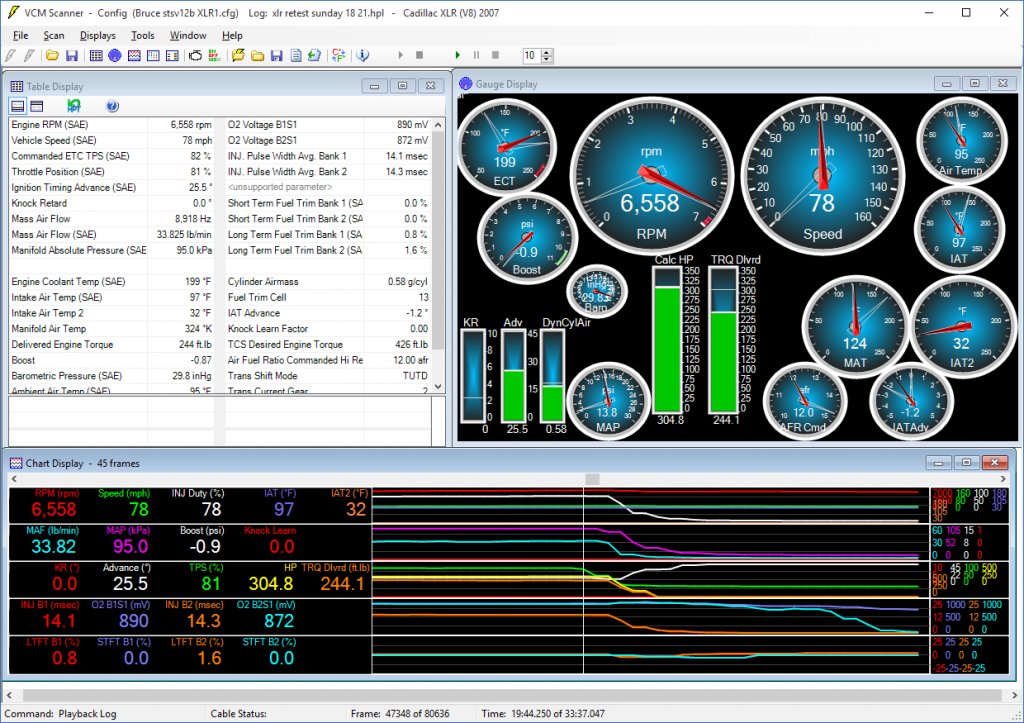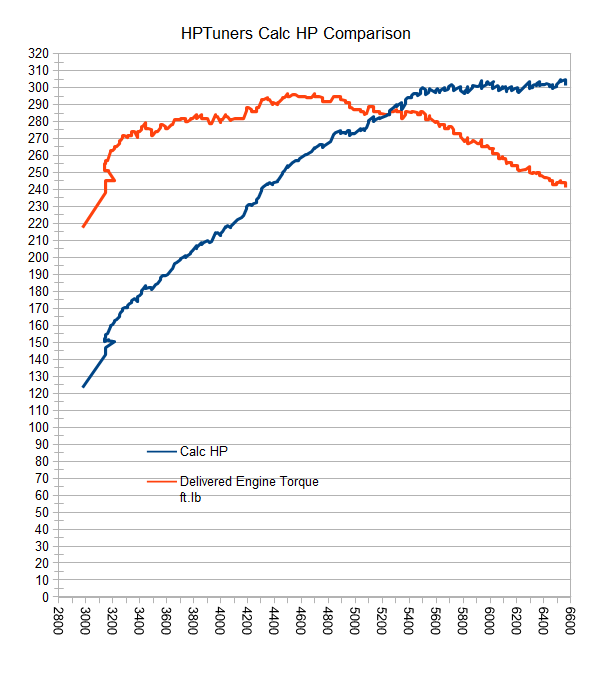Torque and horsepower are related, and if we increase torque everywhere across the RPM band, horsepower will go up as well. What we want to know is what timing or advance will give us the most power? But also, knowing that more timing can mean more heat and more detonation, what is the minimum timing for the maximum torque from the engine (MBT)?
I recently purchased a 2007 Cadillac XLR with the 4.6L LH2 V8 DOHC VVT engine. I will be tuning this platform and publishing my experiences.
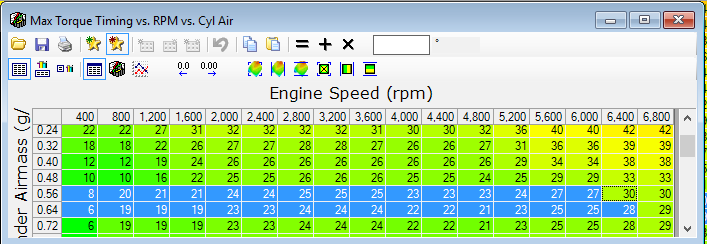
GM helpfully includes a reference table used by the PCM which shows the Max Torque Timing vs RPM vs Cyl Air based on their experiments with the engine design. This table is shown above for the XLR from the factory calibration file for my 2007 XLR 4.6L.
I highlighted the two rows 0.56 and 0.64 cylinder airmass because at WOT the engine flows from 0.61 to 0.58 cyl airmass. So those are the rows of interest. If we get the timing to the values shown along those rows at various RPM values (without detonation), we will maximize the output of the engine.
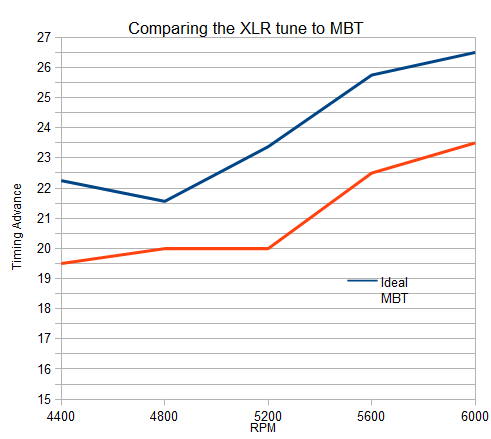
For this sample I captured the actual advance from the engine, the actual measured cylinder airmass, and then calculated the ideal advance from the MBT table to compare to the actual advance from the engine result. What we see is that with the heat and other factors the engine is 3 degrees retarded from MBT. In this range for this engine I believe that is a 15 hp difference.
Now, since some of the gap is CAUSED by intake air temperature (IAT) retard, and some is caused by engine coolant temperature (ECT) retard, we may not be able to get to MBT in the summer heat here in Texas. But during tuning that is the spark advance I will be shooting for.
Separately, I will be looking at the fueling the engine prefers, the transmission tuning, and transitions. If you have other ideas or recommendations please reply below. There is not a lot published on the RWD LH2 Northstar V8, so if you have experience with what worked for you please share.

